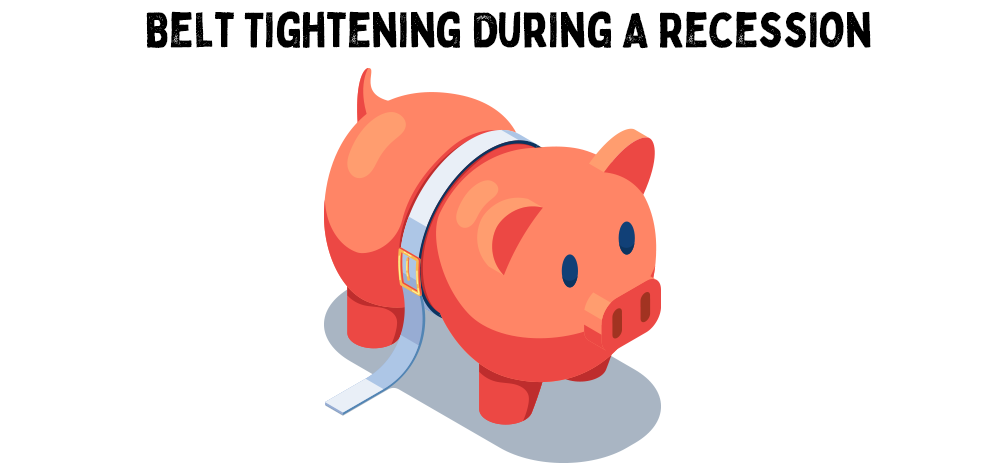A recent story at CBSNews highlighted a disturbing new trend – massive layoffs among top tech companies. Whether this is tied to the predicted recession, the fall of cryptocurrency values, or both, companies are looking for cost-cutting mechanisms. Bill Conerly, senior contributor with Forbes says, “In researching my first book, I called experienced bankers who had seen businesses survive and businesses fail. They all had the same answer: taking prompt action was the key for companies to get through a recession.”
We looked at practical options to cut costs relatively quickly:
#1 Rethink Workforce Spend
Layoffs
Typically during a recession, companies will cut their workforce to absorb a loss in revenue. This is a clear way to balance the budget when less in coming in. Most economists support laying off workers in a recession, stating that it can be a way to improve the overall quality of the team. The company has the option of laying off the poorer performers, the bottom 10%, which can be replaced after the recession with higher-quality staff.
Salary Cuts
Since layoffs can hurt morale, economists recommend other options. When a company wants to keep their employees, but cannot afford full-time pay then furloughs, reductions in the work week, or reducing the workday from eight hours to six.
Don’t Freeze the Fun, DIY it.
Some businesses spend a chunk of funds on discretionary non-essentials like office parties, catered lunches, tuition reimbursement, and travel. These are easy line items to cut from the budget, but the cuts might dig into employee satisfaction. Instead of canceling the events, economists suggest scaling them back or doing them in-house.
#2 Innovate on Healthcare
New healthcare tech companies are using AI and data to pinpoint and carve off waste in employee benefits budgets. It sounds counterintuitive but spending less on the healthcare budget can actually help employees. This is because targeting wasteful spending keeps premiums lower and prescriptions more affordable.
Prescription affordability is extremely important to a healthy workforce. When medication for a chronic condition is too expensive, employees will save money by splitting pills, skipping doses, or just stopping treatment altogether. These cost-cutting tactics do work in the short term but inevitably lead to significantly higher healthcare costs for the employer or their health plan. Emergency room visits blow up healthcare budget reserves.
Cutting prescription costs is easy with the right partner. Many drug savings companies only offer a member or employee-directed pharmacy option, which relies on the employee to find the lowest-cost medication. The best partner is one that goes straight to a physician with a prescription recommendation that has already been run through the company’s formulary. In this case, neither the physician nor the employee has to search through a complicated insurance document to find the best, lowest-cost medication. Patient opinion data speaks loudly about this practice; 80% of employees would rather their physician just prescribe the right medication for them.
These programs can save between 3-8% and only cost a fraction of the savings. They can pay for themselves and there is generally little to no risk.
#3 Take Charge of Benefits
Self-funded employers have the ability to make changes to their formulary, that is, the list of medications that are covered in their plan. In a survey of 15 plan sponsors, using 2017-2018 data, Commonwealth Fund found that large self-funded employers could save from 3 to 24 percent on outpatient pharmacy costs by removing “wasteful” practices from their formularies. Wasteful practices include offering brand-name drugs when generics are available or offering combination drugs when the individual ingredients are cheaper on their own. The formulary can help guide the process, especially when the prescribing physician is brought into the process.
Another benefit to self-funding healthcare is that the employer maintains control over the health plan reserves, enabling maximization of interest income – income that would be otherwise generated by an insurance carrier through the investment of premium dollars.
Switching off a health plan carrier to self-funding is not the answer for everyone. The employer must weigh the risk of assuming the health care claim costs for its employees, which requires the cash flow and financial reserves to meet this obligation.
As the country moves into rougher economical waters, companies can cut costs by rethinking their workforce and benefits budgets and to do it thoughtfully. Bill Conerly says, “The solution is a calm, analytical approach to controlling expenditures. Complete calm is impossible, of course, but still a worthy goal.”




